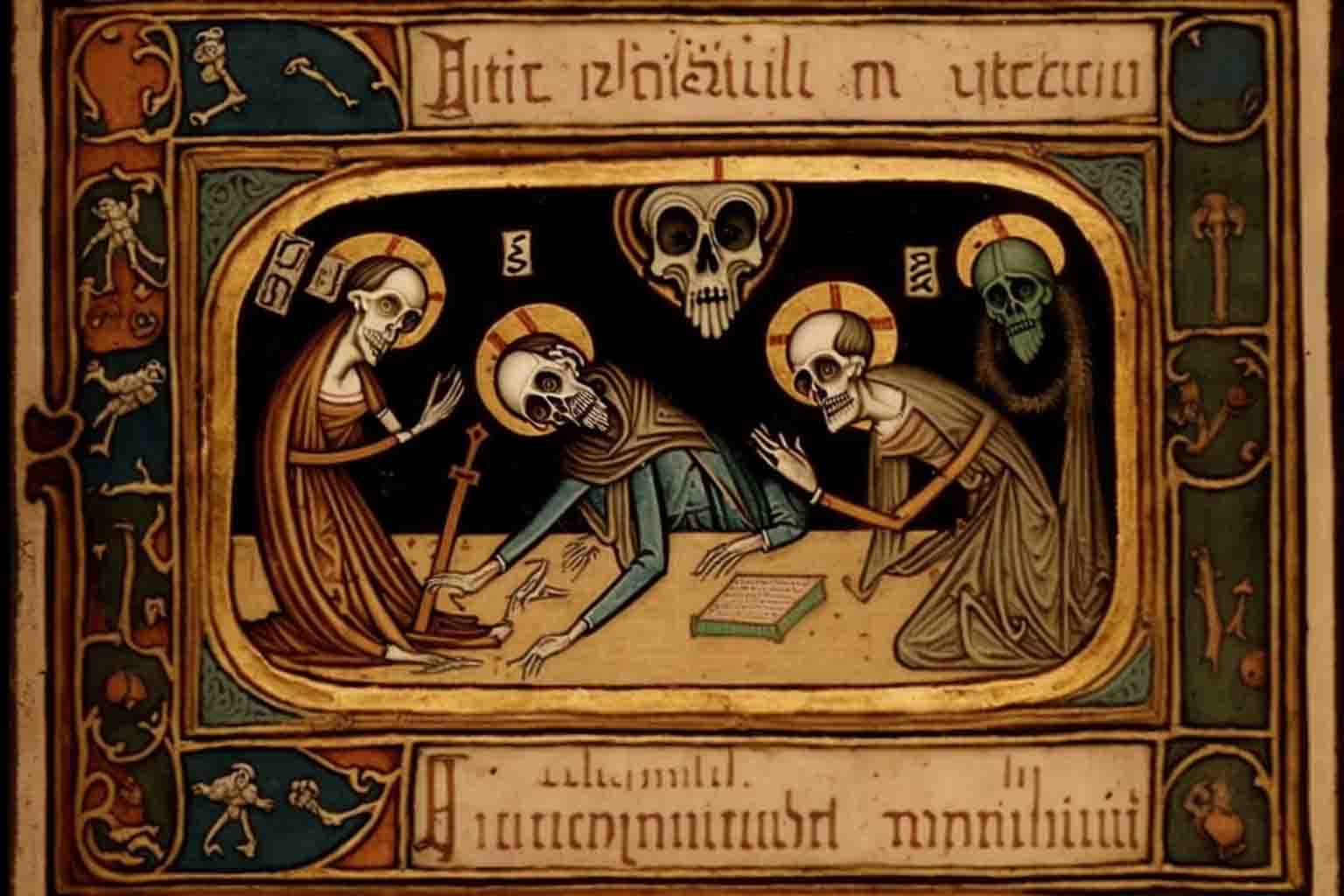The Plague Years (1212-1112)
A mystery plague sweeps across Rela, killing millions...roughly half the population. Deaths begin slowly, inconspicuously, circa 1212 but reach a peak in 1167-1173, when it seems people are dying left and right.
Death visits people in horrible forms. Many who do not die acquire deformities. Not until the end of the period it is realized that healing magic is to blame. The North acquired this knowledge during The Southern Crusades as an incentive to assist southern sorcerors to combat their mundane oppressors. The magic is revealed to possess a slow “genetic” effect which occurs over generations rather than in a single user's lifetime. With this flaw exposed, further plots are quickly discovered which prove that southern mages were always ever after the magic-rich lands of the north, and playing a very long, devious game to get them.
Northern mages cannot find a remedy and are blamed by the mundane population (rightly) for passing the curse along – however, they negotiate expertly with the Drakoyan Emperor so as not to be unseated from positions of power. Once banded together tightly at the beginning of the period, alliances between mage Traditions are strained by the end of the plague, each Tradition being too busy with the problems of its own Steward nations and trying desperately to redeem itself in the public view. Each Tradition emerges stronger for having survived this dismal time, but gone are the golden years of togetherness enjoyed under the Old Empire, memories of which lapse over long centuries until The Reconstruction of recent history brings shared values back into focus.
Delighting in the persecution faced by their northern counterparts, the southern Tradition moves forward into Rela, claiming lands as far north as southern Eherel. The critical battlefield occurs at the Third Meridian, across whose threshold magic use becomes much more powerful. A mighty mundane warlord, Lord Oright Adwine, is principally responsible for driving back the Southern mages, but at great cost. He is afterwards granted territory by the Drakoyan Emperor in 1099, which later expands over the years to become the nation of Rello. On account of the aid it provided, the Rellan state was made very rich by the indebted Drakoya, and even in modern times, Rellans like reminding the Draksi of the fact.
As Rela begins to recover from the plague, the Southern mages are slowly beaten back simultaneously by northern forces and by native mundane populations of Tyril who were subject to their abuses for centuries. Reluctantly, Berythians agree to provide southern mundanes the tools they need to identify and deal with a mage, a difficult decision with the unfortunate consequence of destroying a lot of well-meaning people (“good” necromancers who practice the discipline to honestly help people). Berythians also share the knowledge of Magic Zones so Tyrilans can drive mages down beyond the Fourth Meridian, where their magic is certain to result in The Wrack, an excruciating condition suffered by casters. After this moment in time, the southern Tradition becomes known as "Exiled" and the magic they practice labelled as "Necromancy". The territory between the Third and Fourth Meridians becomes heavily policed, paving the way for the intolerance that would give rise to the likes of the Uvan Empire centuries later, where techniques of surveillance derived from Berythian insights become integrated into everyday life, making paranoia reign supreme.
Mages of the south gain an enormous chip on their shoulder for the role played by “privileged” northern mages in their banishment, and many vow to destroy them all. The Hex, a radicalized faction of Khajuro-worshippers, forms in 1109.
Historically, the Plague Years “period” is continuous with the Old Empire, during which it is colloquially termed The Skeletal Empire. Therein, Iadrak* (Old Draksi) replaces Nagul* as the Lingua Franca beginning in 1200, and persists to roughly 800.





Comments